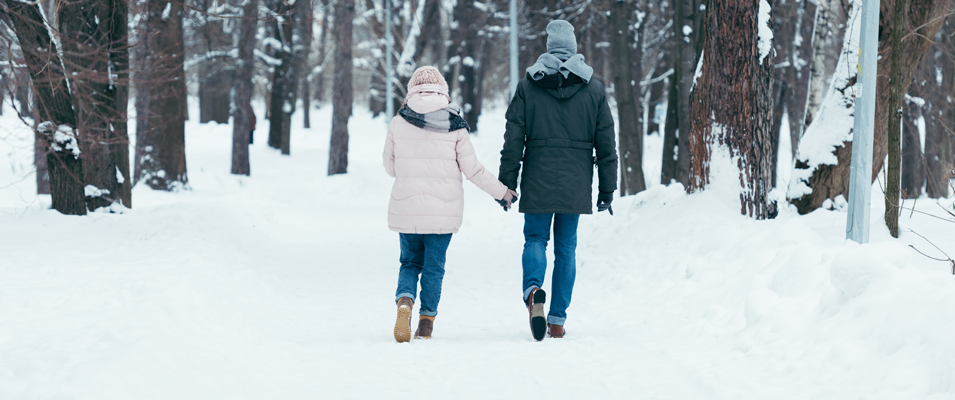
Maintaining a moderate level of physical activity is an important part of healthy aging, helping to prevent injuries that could result from falls and fractures—and one of the best ways to stay active and keep moving is to get out into the great outdoors and walk.
According to data provided by our local health authority, Southern Health-Santé Sud, walking has been shown to improve mental, social and physical health, balance, posture, and muscle strength. It also reduces the risk of developing heart disease, high blood pressure, and diabetes.
Other clear benefits include improved bone health, reducing the risk of fractures from falls. And, of course, it provides us with the opportunity to exercise our social muscles and spend time with others in our communities.
But as winter grinds on, it’s important to make sure you’re being safe about it. After all, several factors can cause a slip or injury while the ground is covered in snow and ice. It’s important to be prepared.
Southern Health-Santé Sud has provided a series of tips.
Number one, they say, wear reflective gear, warm clothing, and non-slip footwear. The monitor the forecast and plan ahead. Dress in layers so you’re prepared for changing winter weather. You can stay warm by wearing a hat, scarf, and gloves.
Another important bit of advice is to remember to wear bright or reflective gear so you can be seen by drivers, cyclists, and other walkers. And keep in mind that if it’s too dark to see others, it’s probably also too dark for them to see you.
They suggest that you choose warm, stable footwear, specifically well-insulated and lightweight footwear with a non-slip tread sole. It’s also a good idea to consider using walking poles, ice grippers on footwear, or other assistive devices.
During your walk, they remind people to scan for hazards. Be aware and take extra precaution when walking over ice, wet leaves, rain, and snow. Try to walk on clear paths, and watch for ice, cracks, and uneven or changing surfaces.
Although it’s safer, and a lot more fun, to walk with a friend, if you find yourself walking on ice alone, be sure to move slowly and think about your next step. Keep your knees loose, shorten your strides, and shuffle your feet—and remember that wet leaves, rain, and snowdrifts can be as risky as ice.
A bit of advice people often overlook is the value of keeping your hands out of your pockets to help stay balanced.
Finally, take extra care when stepping off the last step of stairs. This is a common place for a fall. Use the handrail for extra support when available.
After your walk, be sure to enjoy a glass of water. Dehydration can make you dizzy, which can increase the risk of falling. In fact, it’s a good idea to drink six to eight glasses of water each day to remain fully hydrated.


















